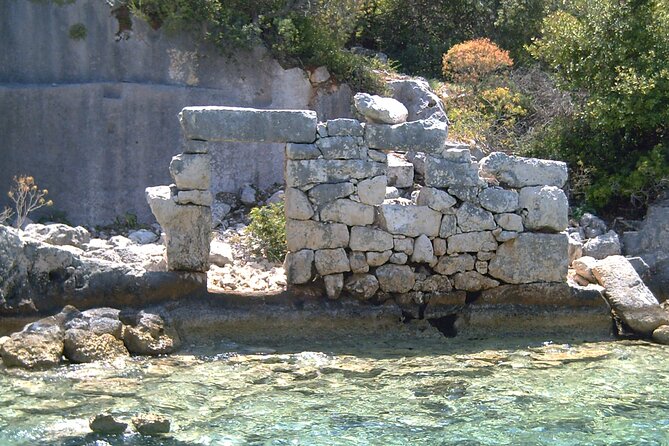Beneath Prague’s fairytale spires lies a rich tapestry of Jewish history, woven into the very fabric of the city. From the hallowed halls of the Old-New Synagogue to the poignant memorials of the Pinkas Synagogue, each landmark tells a story of resilience, faith, and a thriving cultural legacy that continues to captivate visitors. Uncover the Renaissance grandeur of the Jewish Town Hall, the ornate beauty of the Spanish Synagogue, and the treasures of Prague’s renowned Judaica collections. Explore the city’s golden age of Jewish culture and the lasting impact of the Edict of Toleration. Prepare to be immersed in a world where the past and present intertwine, revealing the enduring stories that make Jewish Prague truly unique.
Key Points
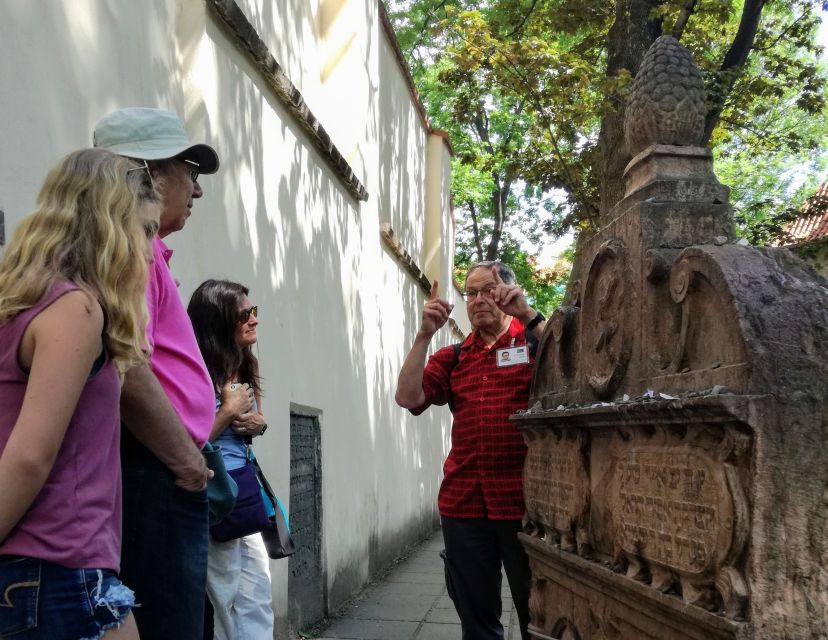
- The Old-New Synagogue, dating back to 1270, stands as the oldest functioning synagogue in Europe, embodying Prague’s rich Jewish heritage.
- The Renaissance-era Jewish Town Hall was the administrative heart of the Jewish Quarter, reflecting the community’s political influence and resilience.
- The Pinkas Synagogue and Old Jewish Cemetery serve as poignant memorials to the tragic history of Prague’s Jewish community.
- The Spanish Synagogue’s Moorish-inspired architecture showcases the enduring presence and cultural significance of the Jewish community in Prague.
- The Jewish Museum’s vast collection of Judaica highlights the creativity, scholarship, and resilience that defined the Golden Age of Jewish culture in Prague.
Old-New Synagogue and Its History
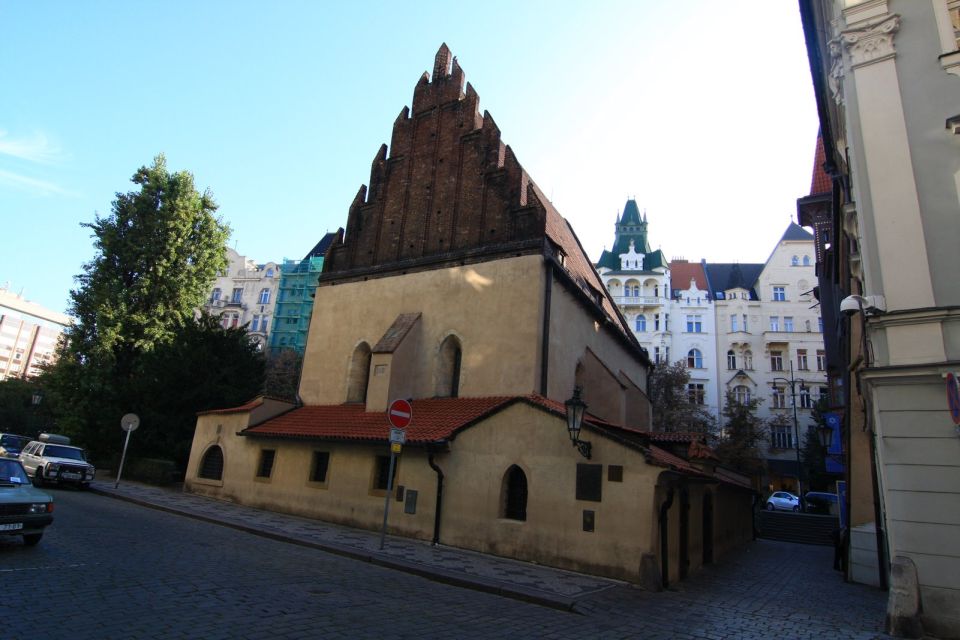
The Old-New Synagogue, built around 1270, stands as the oldest functioning synagogue in Europe, its striking Gothic architecture and rich history captivating visitors to Prague’s Jewish Quarter.
This medieval gem boasts unique architectural features, including a slanted ceiling and star-shaped windows that flood the interior with natural light.
Stepping inside, one is transported back in time, with the synagogue’s sacred atmosphere and well-preserved details transporting visitors to centuries past.
The Old-New Synagogue played a vital role in the life of Prague’s Jewish community, serving as a place of worship, study, and gathering for generations.
Today, this revered site continues to awe and inspire all who come to explore the stories woven into its ancient walls.
Renaissance-Era Jewish Town Hall
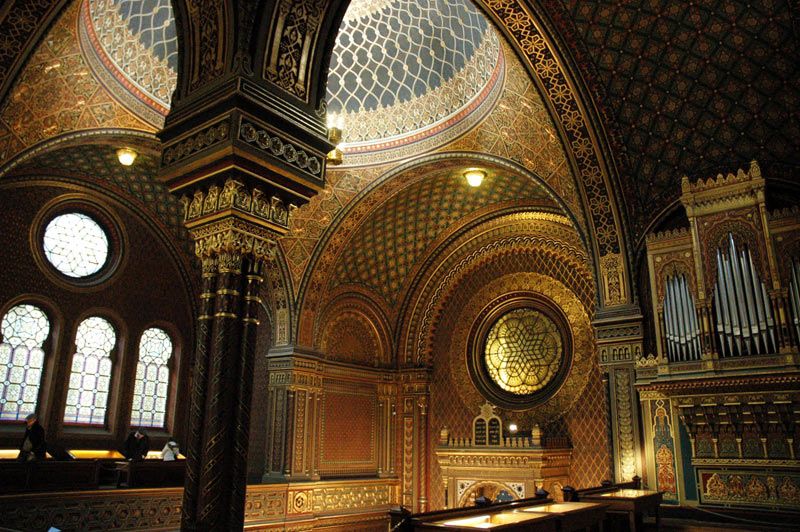
Nearby the Old-New Synagogue stands the Renaissance-era Jewish Town Hall, a remarkable architectural gem that offers a window into Prague’s vibrant Jewish past.
Built in the 16th century, this historic structure served as the administrative and communal heart of the city’s Jewish Quarter, housing key institutions and facets of community life.
Visitors can admire the building’s elegant Renaissance-style façade, complete with decorative gables and intricate carvings.
Inside, the Hall’s grand assembly hall and council chambers evoke the political influence and autonomy once enjoyed by Prague’s Jews.
Today, the meticulously preserved Town Hall stands as a testament to the rich cultural heritage and resilience of this remarkable community, an essential stop on any tour of Jewish Prague.
Pinkas Synagogue and Old Cemetery
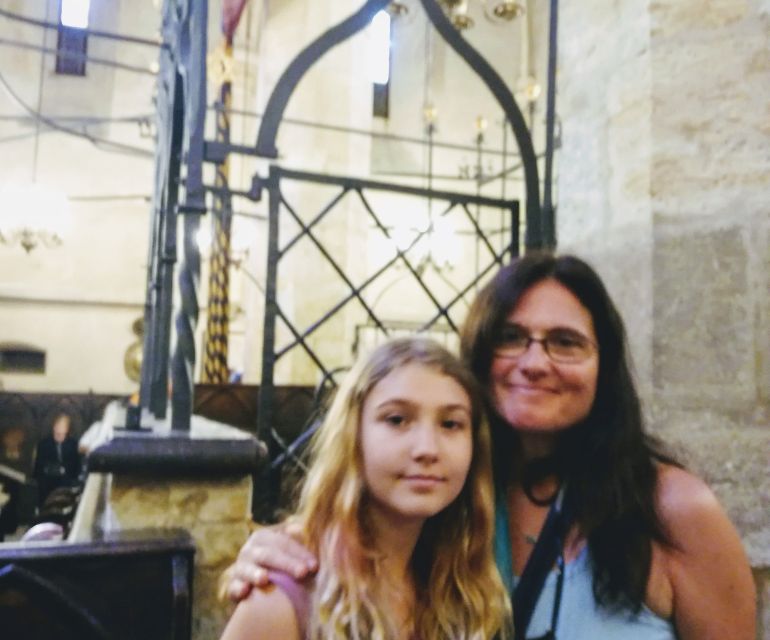
Alongside the iconic Old-New Synagogue, the Pinkas Synagogue and adjacent Old Jewish Cemetery offer a profoundly moving glimpse into Prague’s storied Jewish heritage.
Erected in the 15th century, the Pinkas Synagogue’s somber, understated façade belies its remarkable interior, which features the names of over 77,000 Czech Jews murdered during the Holocaust meticulously inscribed upon its walls – a haunting memorial to the unfathomable tragedy that befell this community.
Adjacent to the synagogue, the Old Jewish Cemetery stands as a powerful relic, its densely packed, centuries-old tombstones providing a tangible connection to Prague’s Jewish past.
Wandering amidst these sacred spaces, visitors gain a deeper understanding of the resilience and enduring spirit of the city’s Jewish people.
Exploring the Spanish Synagogue
Nestled within the historic Jewish Quarter of Prague, the Spanish Synagogue captivates visitors with its breathtaking Moorish-inspired architecture and rich cultural significance. Constructed in the Mudéjar style during the mid-19th century, this magnificent edifice stands as a testament to the enduring presence and influence of the Jewish community in the city.
As guests step inside, they’re immediately struck by the synagogue’s opulent interior, adorned with intricate stained-glass windows, ornate chandeliers, and vibrant frescoes.
The synagogue’s three key features include:
- The stunning Moorish-style domed ceiling, which creates a sense of grandeur and spirituality.
- The ornate Ark, housing the sacred Torah scrolls, decorated with carved wooden panels and gilded metalwork.
- The ornamental balustrades and columns, reflecting the distinct Mudéjar architectural style.
Exploring the Spanish Synagogue offers visitors a captivating glimpse into Prague’s rich Jewish heritage and the enduring resilience of its community.
Prague’s Judaica Collections Unveiled
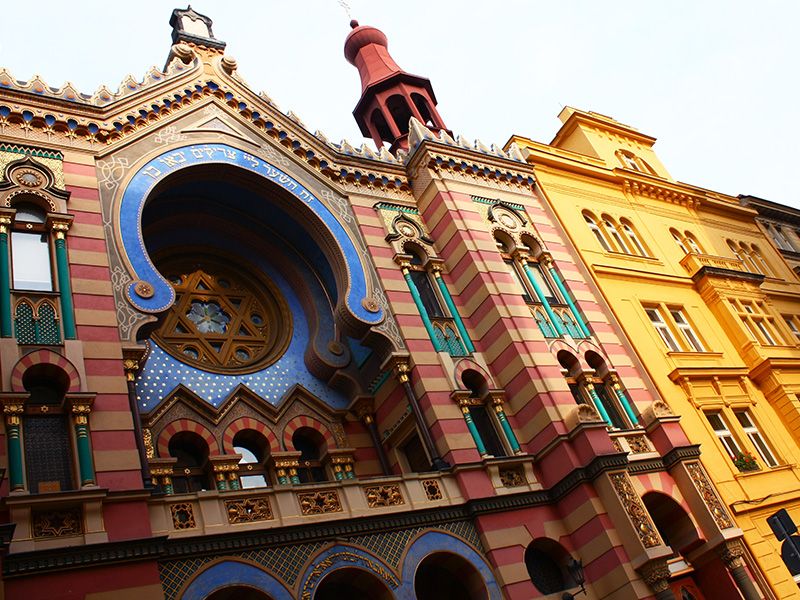
Prague’s Jewish Museum houses one of the world’s largest and most significant collections of Judaica, offering visitors a captivating journey through the rich cultural tapestry of the city’s Jewish heritage.
From ancient ritual objects to rare manuscripts and breathtaking ceremonial textiles, the museum’s vast galleries showcase the remarkable artistry and enduring traditions of the Czech Jewish community.
Visitors can marvel at exquisitely crafted silver Passover Seder plates, intricate Torah covers embroidered with gold thread, and centuries-old prayer books that bear witness to the resilience and creativity of Prague’s Jewish people.
Exploring these extraordinary Judaica collections is a truly humbling and enlightening experience, shedding light on the profound cultural legacy that continues to shape the city’s identity.
The Golden Age of Jewish Culture
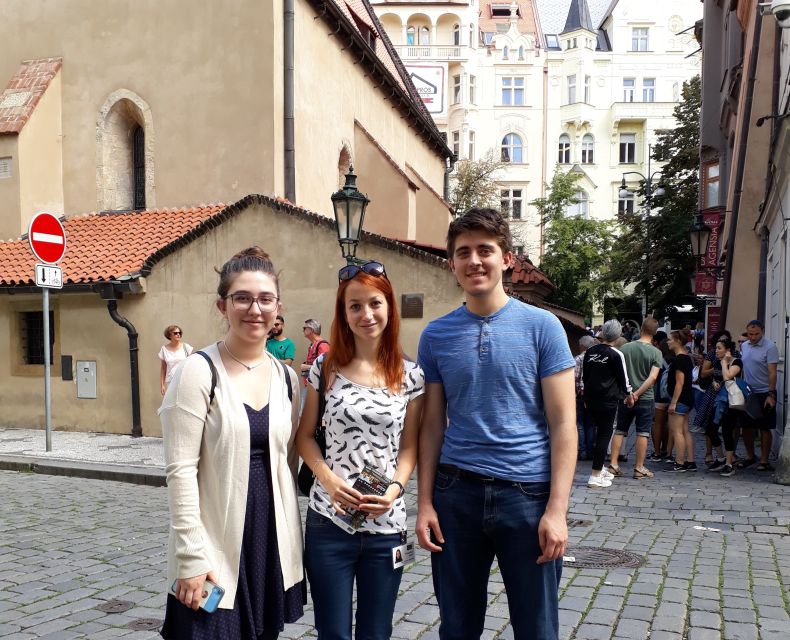
The 16th century marked a remarkable era of cultural flourishing for Prague’s Jewish community, known as the Golden Age, when the city emerged as a center of Jewish learning, artistic expression, and intellectual vitality.
During this prosperous period:
- The city’s Jewish population grew, attracting scholars, rabbis, and artists who contributed to a vibrant cultural landscape, including the renowned Old-New Synagogue and the influential Jewish Town Hall.
- Prominent Jewish figures, such as Judah Loew ben Bezalel (the Maharal), made significant contributions to theology, philosophy, and Kabbalistic studies, cementing Prague’s status as a hub of Jewish scholarship.
- The community’s artistic prowess blossomed, with the creation of intricate Judaica, stunning synagogue interiors, and the flourishing of Jewish printing presses that disseminated influential works across Europe.
Impact of the Edict of Toleration
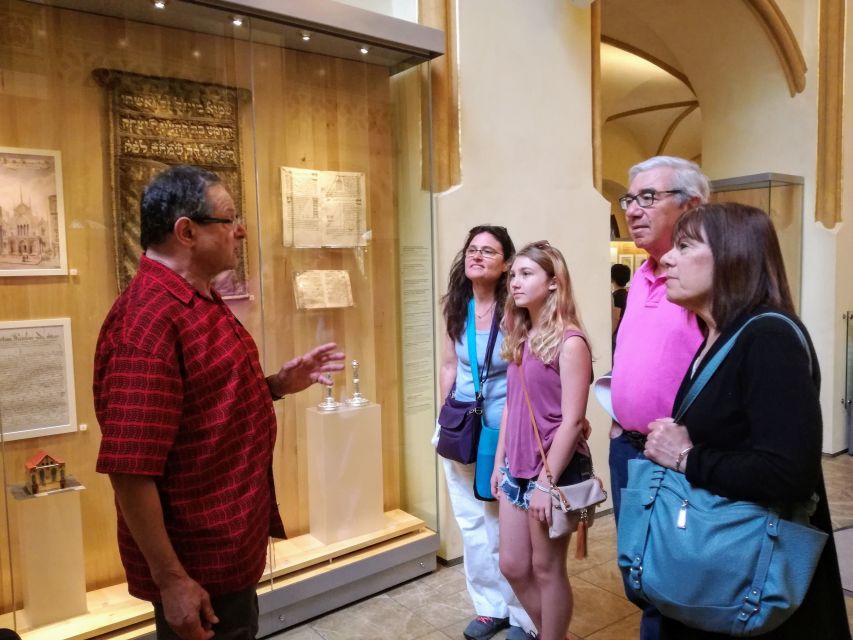
In 1782, the Edict of Toleration issued by Emperor Josef II transformed the landscape for Prague’s Jewish community, granting them unprecedented religious freedoms and paving the way for their fuller integration into Czech society.
This landmark legislation lifted restrictions on Jewish education, employment, and property ownership, allowing the community to flourish culturally, economically, and socially.
With new opportunities for upward mobility, Prague’s Jews embraced enlightenment ideals and played an increasingly prominent role in the city’s intellectual and cultural life.
The edict’s impact was profound, ushering in a Golden Age that saw the Jewish community make remarkable contributions to Prague’s vibrant tapestry, from commerce and the arts to philosophy and science.
Guided Tour Insights and Experiences
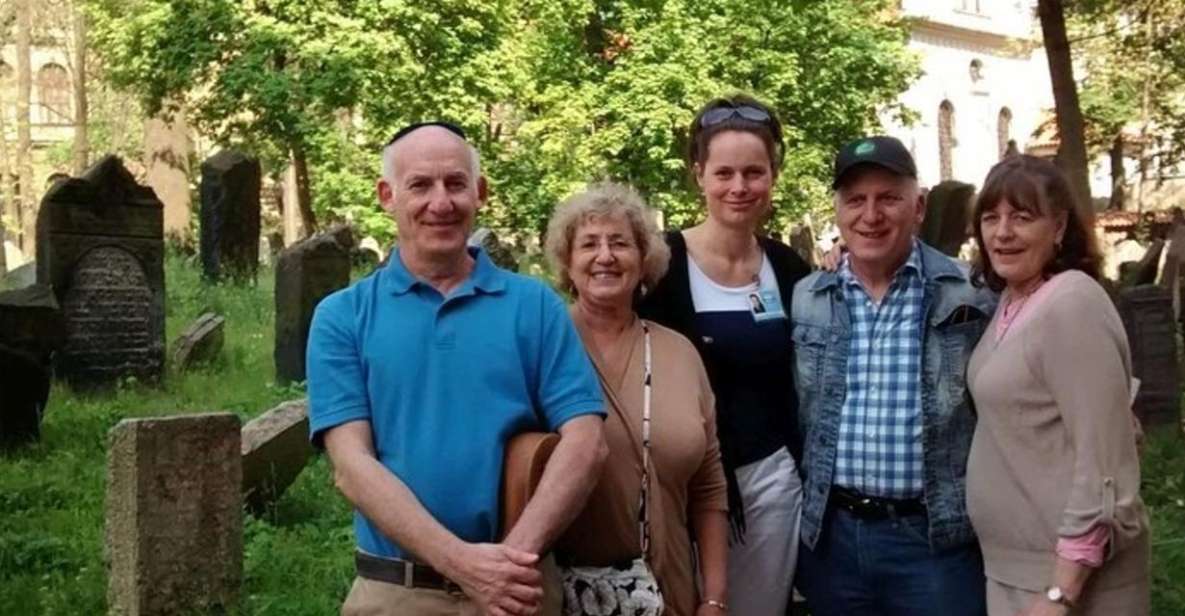
Knowledgeable guides bring the rich tapestry of Prague’s Jewish heritage to life, offering captivating insights that transport visitors back through the centuries.
Whether sharing the architectural marvels of the Old-New Synagogue or delving into the profound cultural significance of the Pinkas Synagogue, they skillfully weave together the complex narratives that have shaped this community’s enduring story. Their expertise shines through as they guide guests through:
- The Spanish Synagogue, a dazzling display of Moorish architecture that reflects the community’s Golden Age during the 16th century.
- The Old Jewish Cemetery, a poignant reminder of the tragedies that befell this resilient population.
- The Jewish Museum’s extraordinary collection of Judaica, providing a window into the vibrant religious and artistic traditions of Prague’s Jews.
Frequently Asked Questions
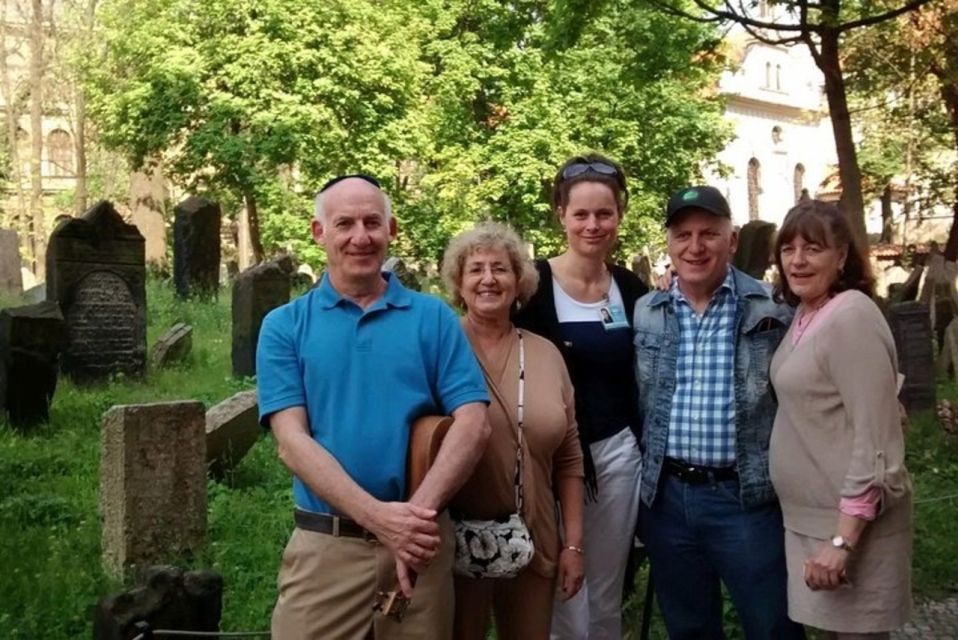
How Accessible Are the Jewish Sites for Visitors With Disabilities?
The tour’s accessibility note indicates the sites have narrow and steep stairs, though private tours can be tailored for visitors with mobility issues. The knowledgeable guides are happy to accommodate guests’ needs for an immersive, personalized experience.
Are Photography and Recording Allowed During the Tour?
Photography and recording are generally allowed during the tour, though visitors should be respectful and avoid disrupting the experience. Guides may request photos not be taken in some sensitive areas. Visitors should check with their guide for specific policies.
What Is the Dress Code for Visiting the Jewish Sites?
The tour recommends modest, respectful attire when visiting the Jewish sites. Participants should cover their shoulders and wear knee-length or longer skirts/pants. This helps maintain the sacred nature of these historic and religious sites.
Do the Tour Guides Offer Private Tours in Languages Other Than English?
The tour guides do offer private tours in languages other than English. Visitors can inquire about availability and pricing for private tours in languages like German, French, Spanish, Italian, and more to suit their needs.
Are There Any Age Restrictions or Special Considerations for Children on the Tour?
The tour welcomes all ages and offers a family-friendly experience. While no strict age limits apply, the tour involves walking and some steps, so parents should consider their children’s abilities. Private tours can be customized to accommodate families with younger kids.
Recap
The stories of Jewish Prague are a tapestry of resilience, culture, and community.
From the Old-New Synagogue to the Spanish Synagogue, each landmark reflects the vibrant legacy that continues to inspire visitors.
Prague’s Judaica collections and guided tours offer a fascinating glimpse into the city’s golden age of Jewish culture, a testament to the enduring power of faith and perseverance.




